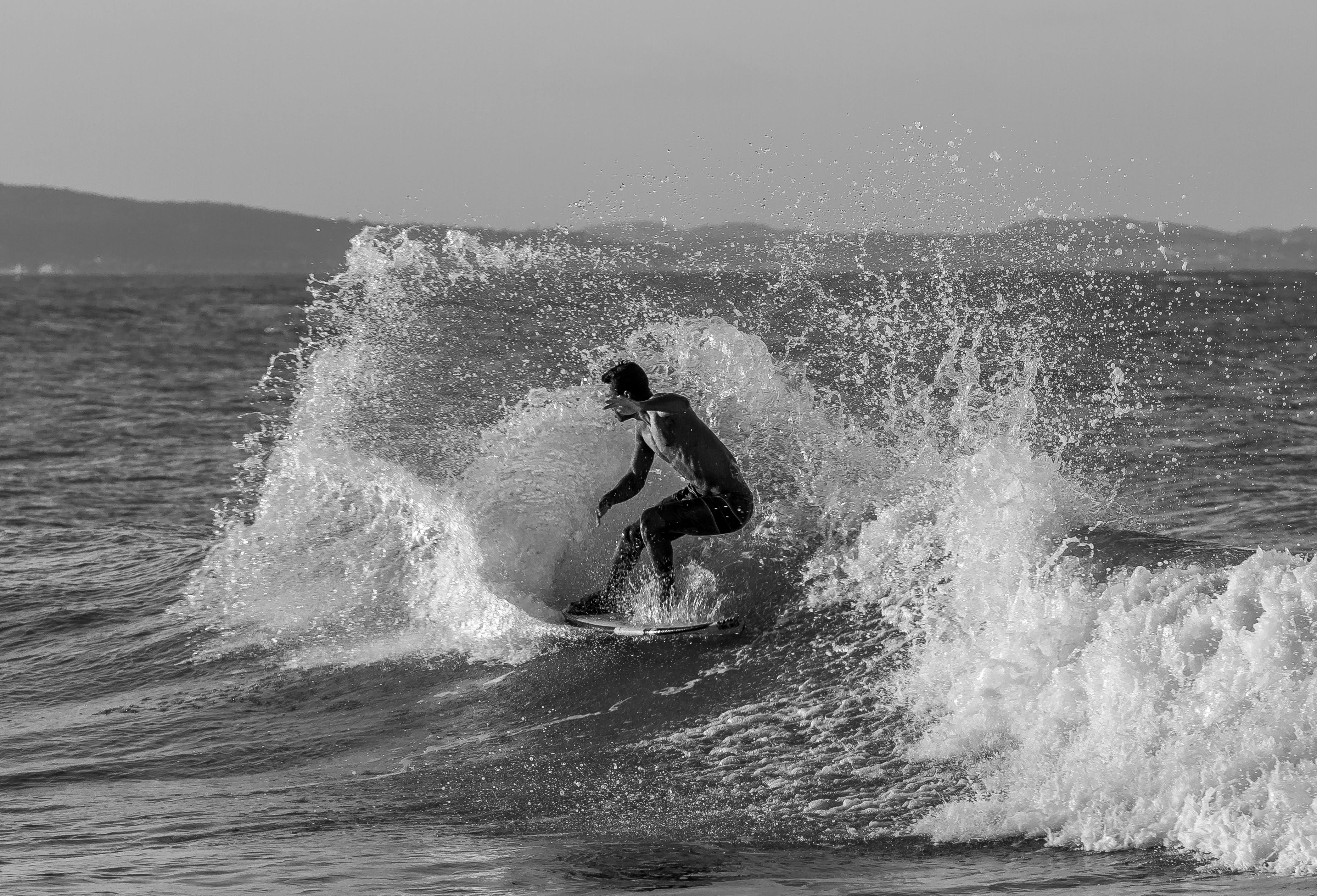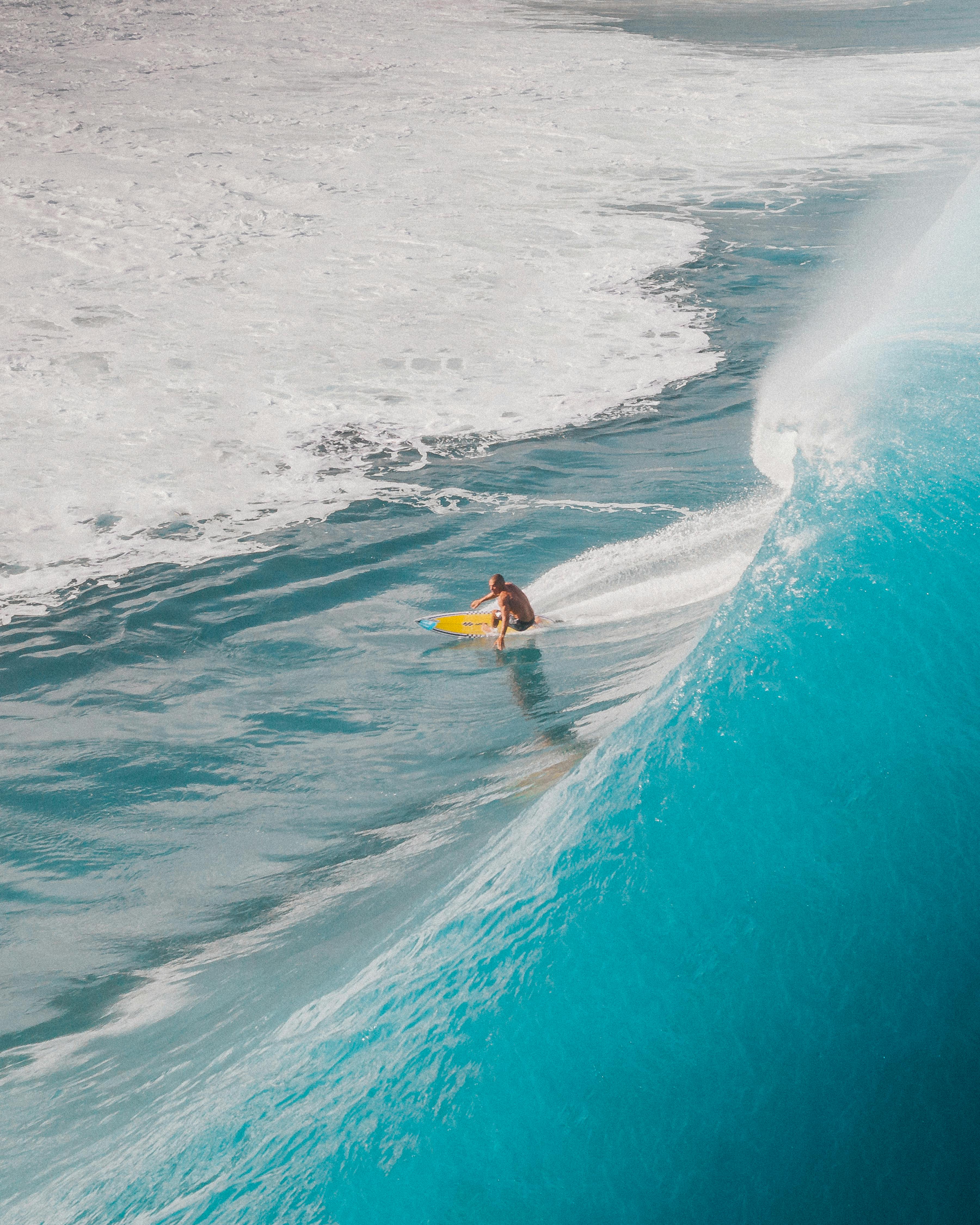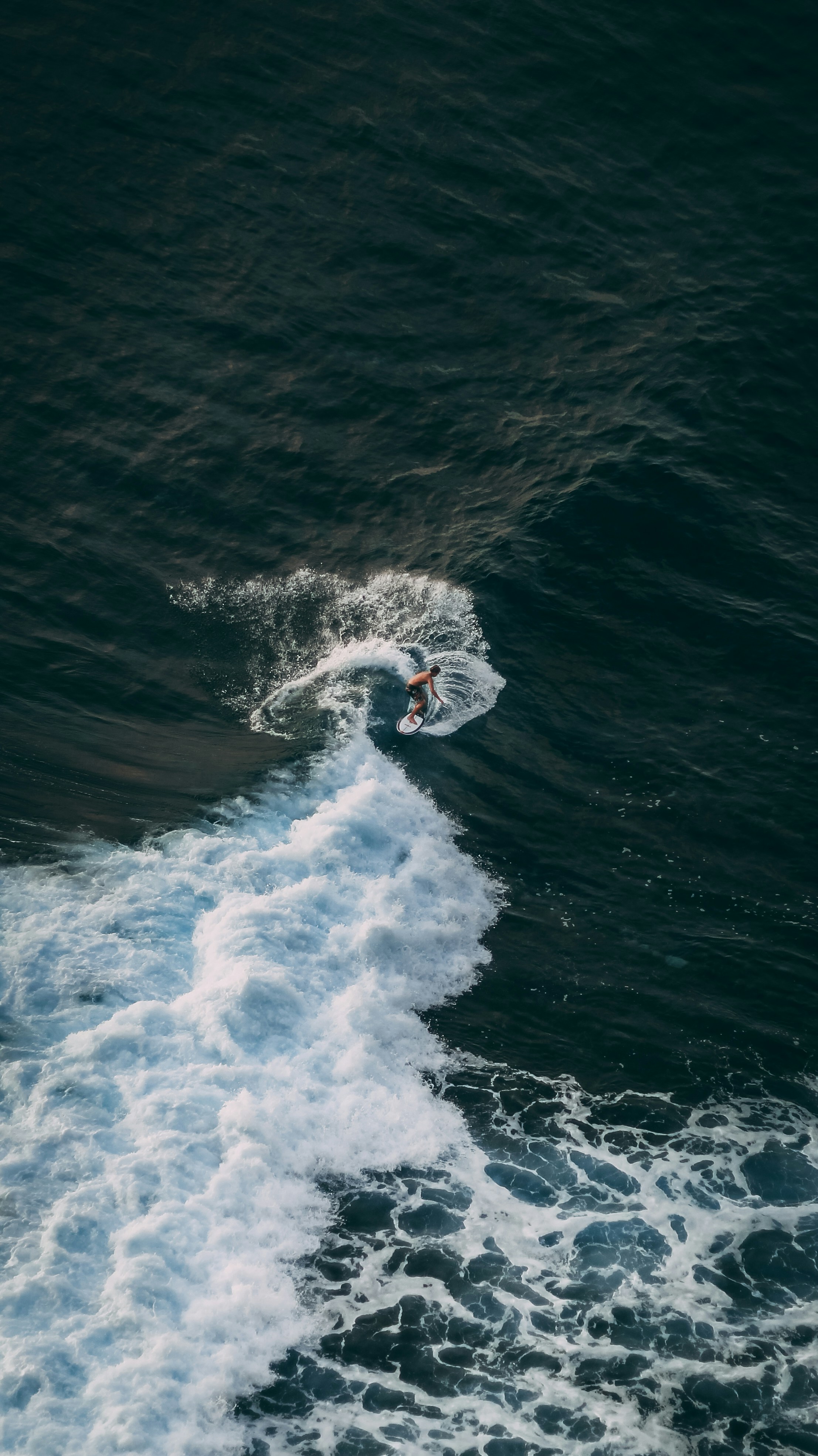Why You Need to Surf Rail to Rail – Not Flat and Fast
You’ve heard it before: “Surf rail to rail.”
But what does that actually mean – and why does it make such a difference?
Turns out, the answer isn’t just technique. It’s physics.
Once you understand how your board interacts with water – and why staying flat kills speed – everything starts to click.
1. Rail Surfing Isn’t Style – It’s Science
When you lean your board on rail:
– You reduce drag
– You let the rocker cut cleanly through water
– You engage more fin in the wave
– You unlock lift, drive, and hold – all at once
When you stay flat:
– Fins cancel each other out
– Rocker resists flow
– You get speed loss, not acceleration
Surfing rail to rail isn’t about carving – it’s about using the wave’s energy to carry you, instead of fighting it.
2. The Coandă Effect Makes You Stick (in a Good Way)
Ever wonder why planes fly? Or why a spoon bends water when held under a tap?
That’s the Coandă effect – when a fluid sticks to a curved surface.
In surfing:
– Water sticks to your rail like air sticks to a wing
– That creates lift
– Lift carries you up the wave
– Gravity pulls you down
– Momentum keeps you moving forward
Engage the rail, and the wave does the heavy lifting.
3. Your Fins Are Designed to Turn – Not Just Stabilize
Fins aren’t dead straight.
They’re toed in slightly – designed to redirect water flow and generate lift, like airplane wings.
When you’re flat: left and right fins cancel each other out.
When you’re on rail: one fin lifts, the other exits – giving you a clean line and powerful response.
This isn’t theory. It’s built into your equipment. You just need to use it.
4. Want Flow? Think Figure Eights
Every other board sport teaches this instinctively:
– Snowboarders carve side to side
– Skaters pump by leaning edge to edge
– Water skiers zigzag to control speed
Surfing is no different.
Stop racing to the shoulder in a straight line.
Start drawing figure-eight-style turns: down-up, up-down – each rail loading and unloading like a slingshot.
5. Flat = Force. Rail = Lift.
Trying to turn flat is like trying to drive a car with the handbrake on.
You can do it – but it’s slow, clunky, and drains your momentum.
Turning on rail? It feels smooth. Effortless. Like the wave wants you to go there.
That’s not just feel. That’s physics in your favor.
How TRAX Helps You Surf on Rail – Not Just Talk About It
TRAX measures:
– How early you engage the rail
– Whether you’re flattening mid-turn
– Where your turns lift – and where they stall
You don’t need perfect footage or a coach yelling from the channel.
You need clear data on what your board – and body – are actually doing.
TRAX gives you that clarity. So you can trust the rail, use the lift, and stop surfing flat.
Related Reading:
→ How Waves Really Work — You’re not surfing water. You’re surfing spiraling energy.
→ Still Surfing from Your Back Foot? — Lift only works if you shift forward.








